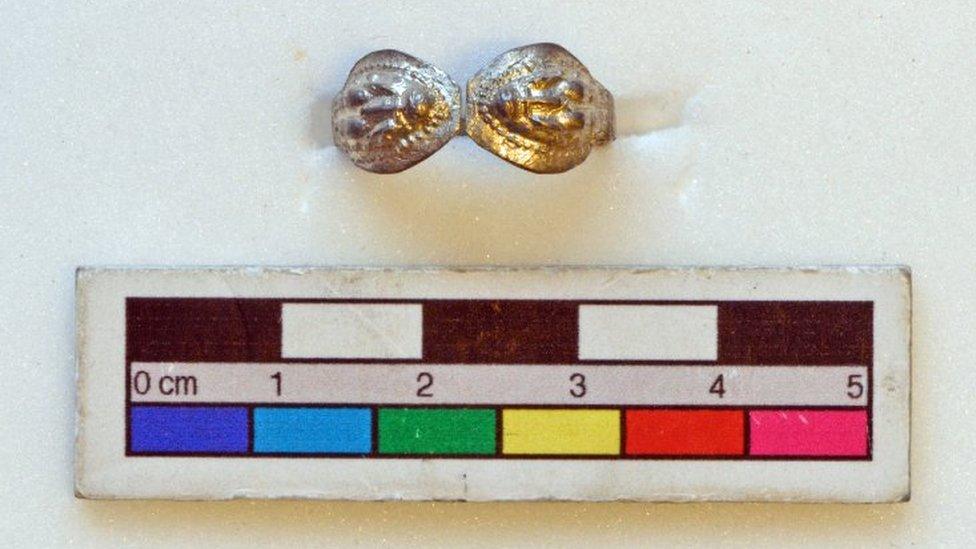Roman snake ring found in Buckinghamshire declared treasure
- Published

The Roman ring would have been circular with the snakes' heads touching, but it has been bent out of shape
A Roman ring might have been made by the same jeweller behind a famous hoard and would have belonged to "someone with access to a fair amount of money".
The silver ring, featuring two snake heads, was found in Buckinghamshire by a detectorist from Essex.
Items with the same "distinctive cobra heads with a kind of frill" were part of the Snettisham Jeweller's Hoard, external, found in Norfolk in 1985.
Essex finds officer Sophie Flynn, said it was a "pretty exciting" discovery.
The Snettisham hoard, thought to be from the stock of a single jeweller, was buried in a pot in about AD155 and rediscovered during building work.

This ring from the Snettisham jeweller's hoard has a similar snake's head design to the one found in Buckinghamshire
The newly-found ring, unearthed at Upper Winchendon near Aylesbury, has been bent so experts "can't be 100% sure about its original design", Ms Flynn said.
She added that because the Snettisham hoard had pieces in it with these type of snake heads "it's possible it came from that workshop" but, as it was found in a field with "no [archaeological] context", experts could not be certain.
'Quite unusual'
In her book, The Jewellery of Roman Britain, Catherine Johns said it was thought snake-motif jewellery was worn as an amulet because in the classical world snakes were positive symbols - associated with healing, rebirth and ancestors.
Ms Flynn said it "isn't your everyday ring".
"It's quite unusual because of the two snake heads, and to find it is pretty exciting because we don't have many examples of this kind of ring in the [British Museum's] Portable Antiquities Scheme database," she said.
She said the silver ring would have "belonged to someone with access to a fair amount of money", whereas less valuable versions would have been made of copper.
The ring, found in March 2018, was declared treasure at Buckinghamshire Coroner's Court.
A museum has expressed an interest in buying the ring and is waiting for the Treasure Valuation Committee's verdict on the price.